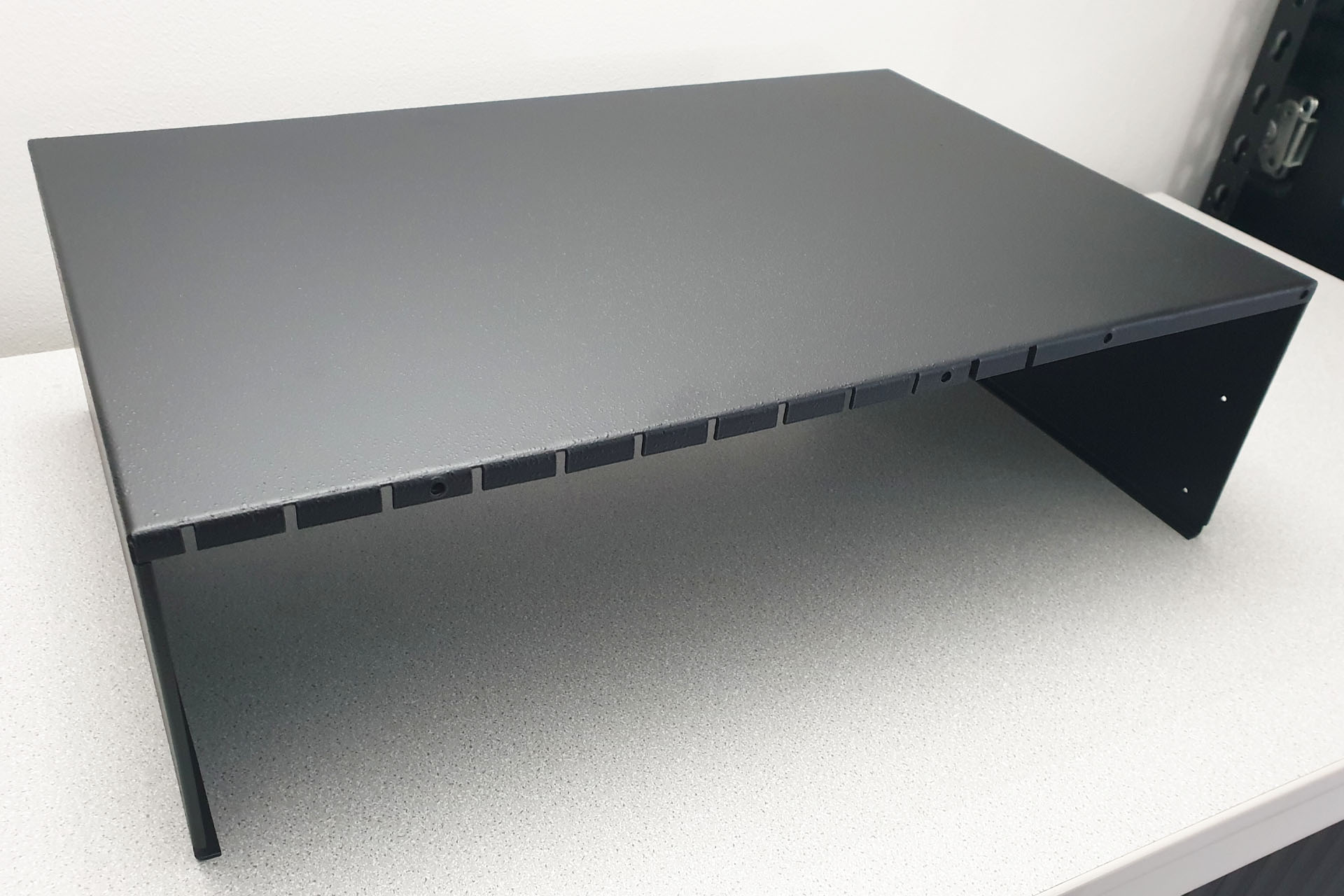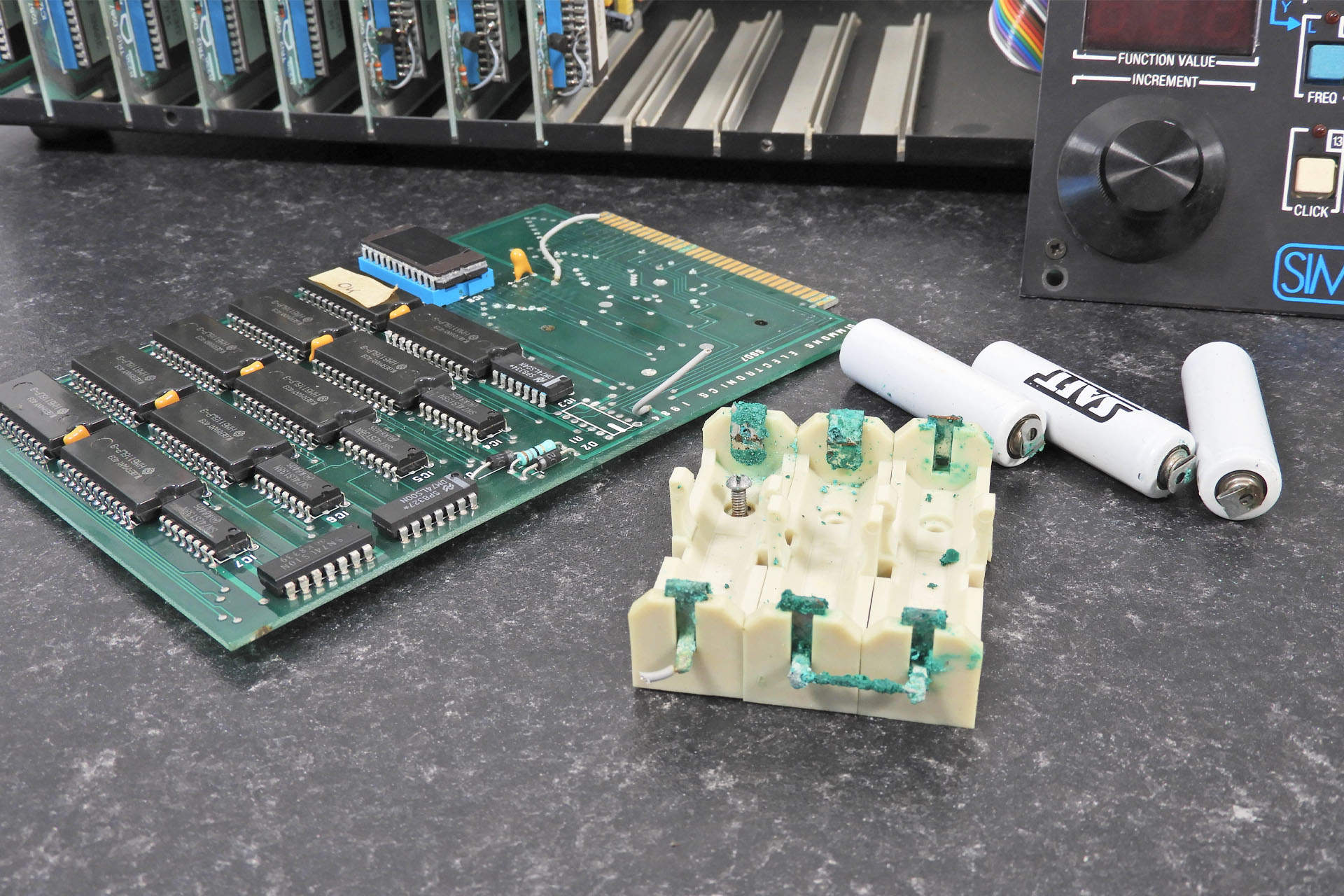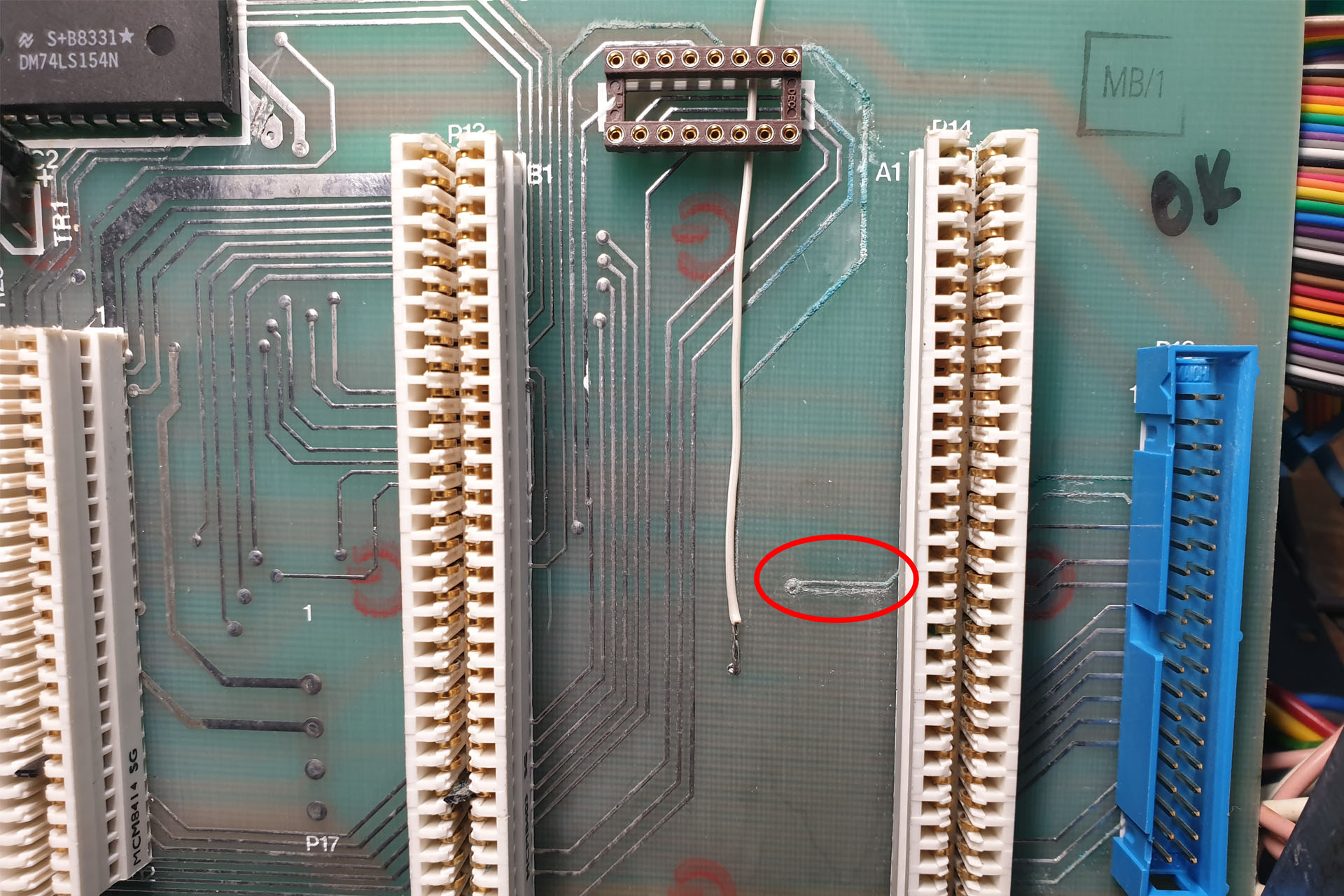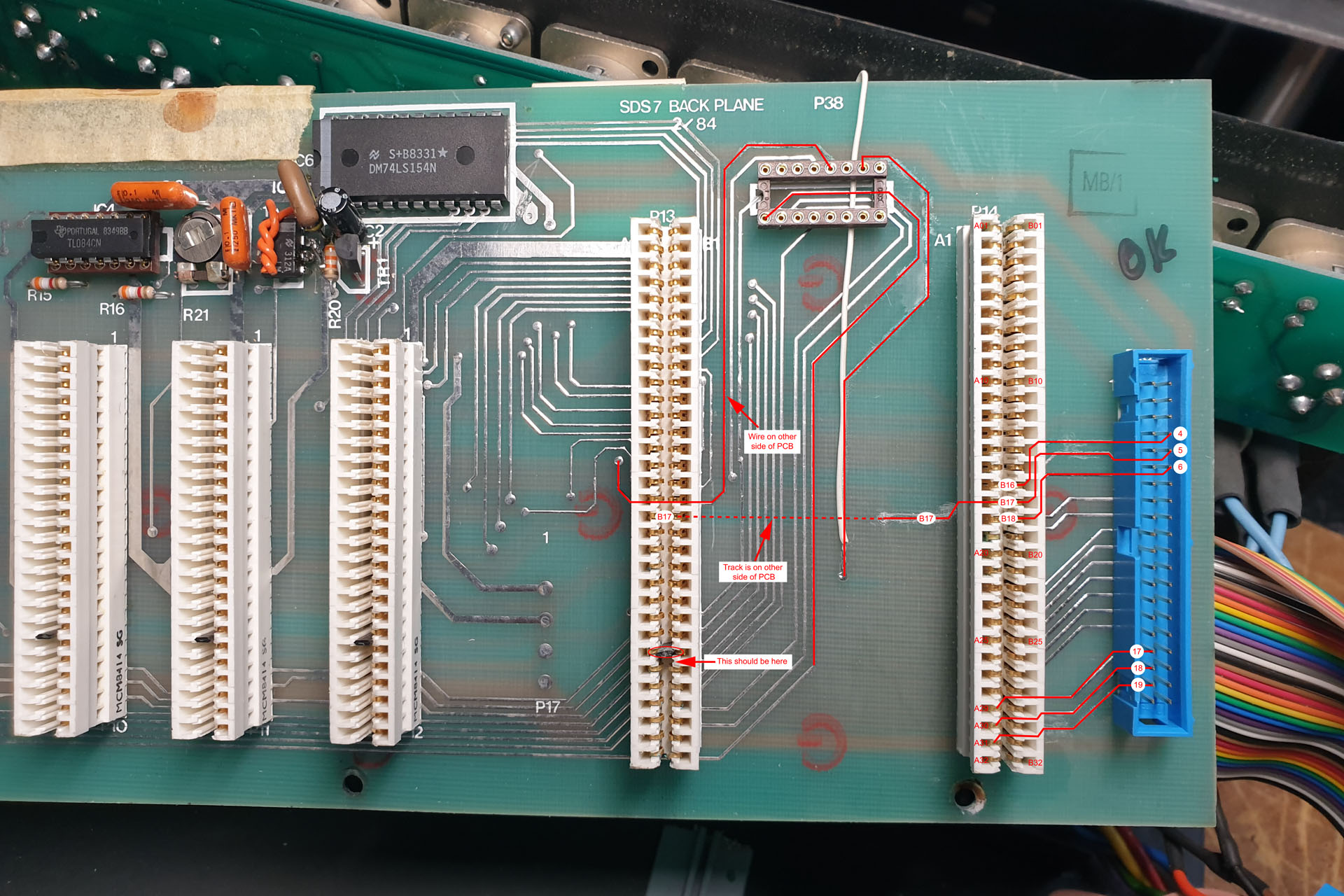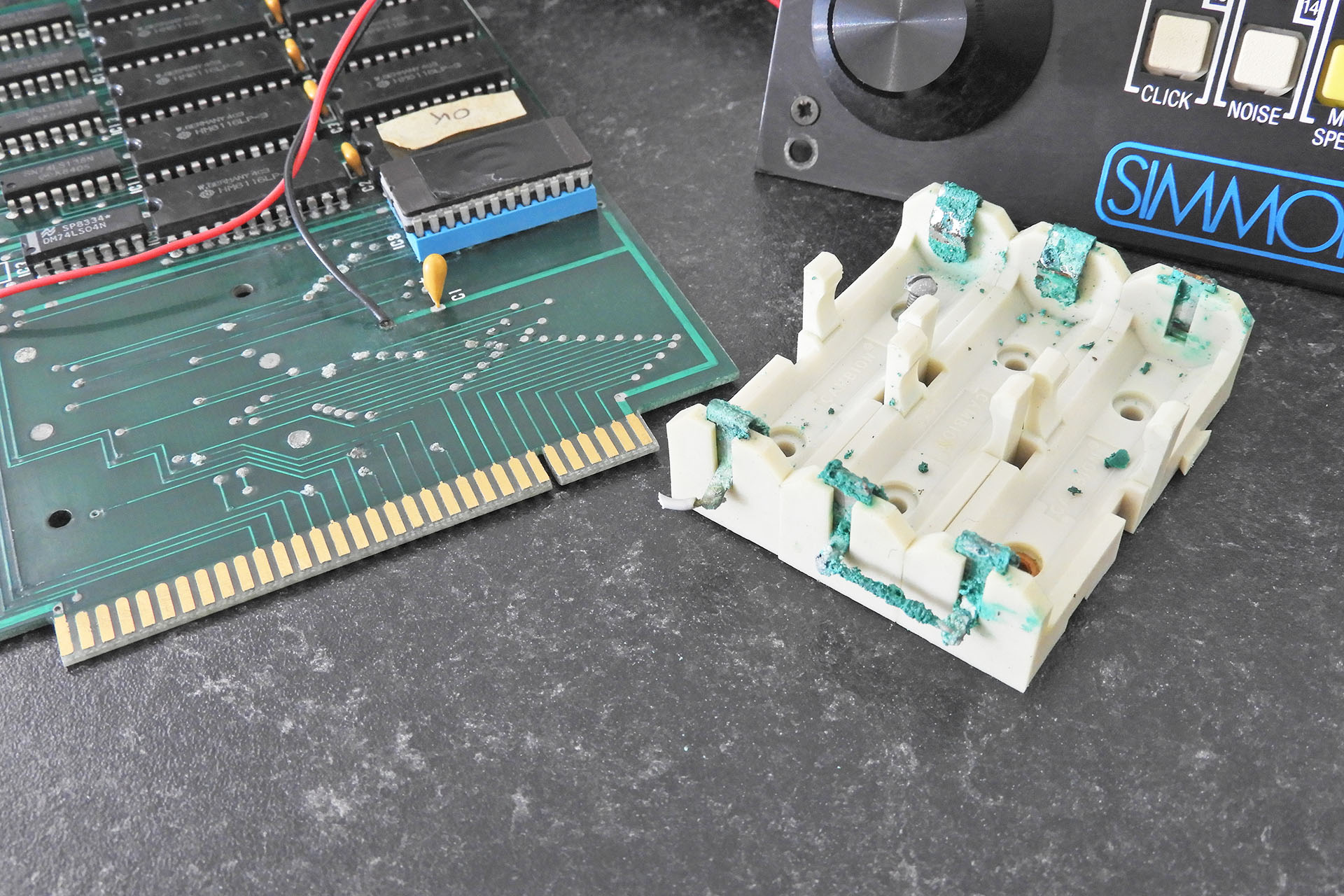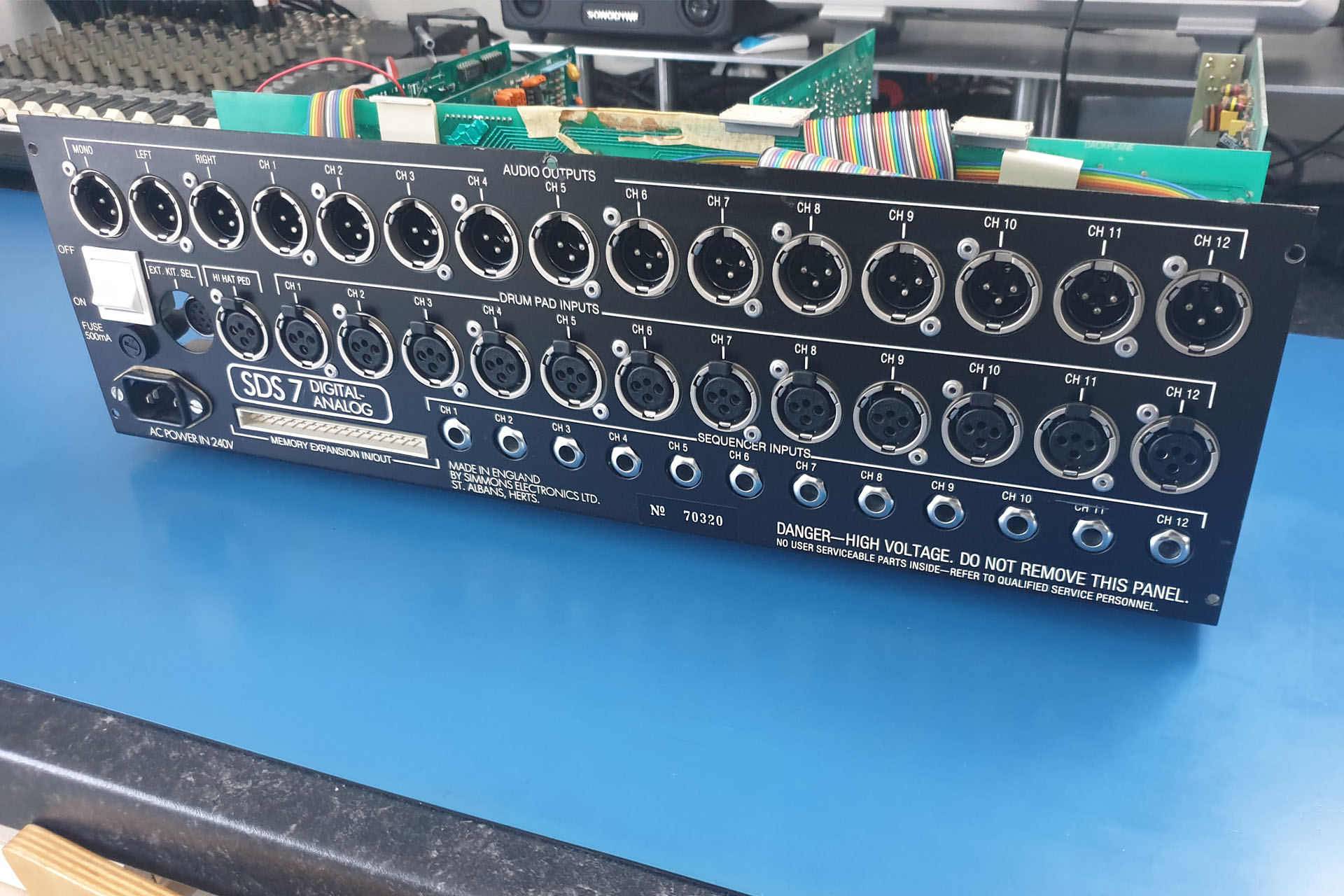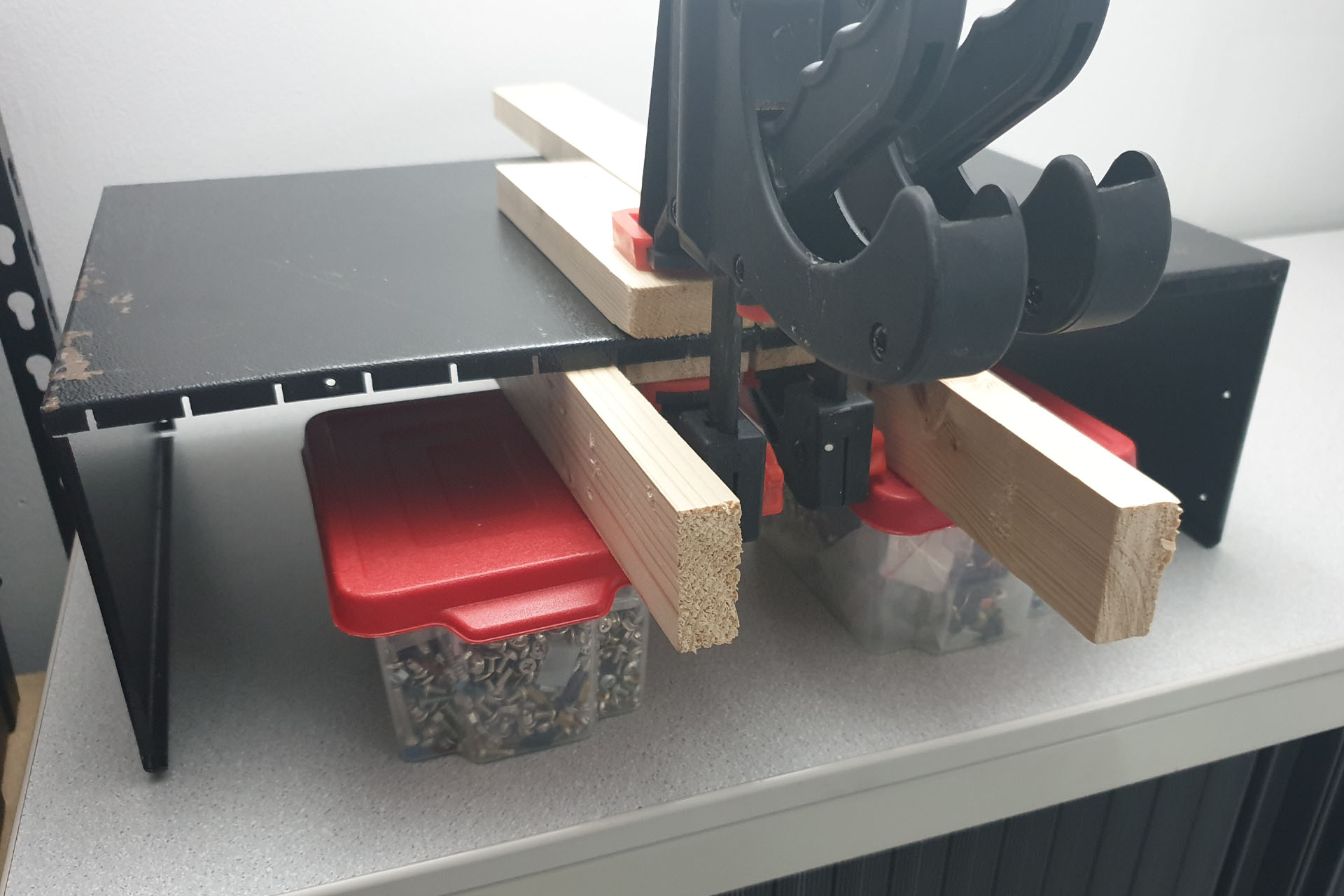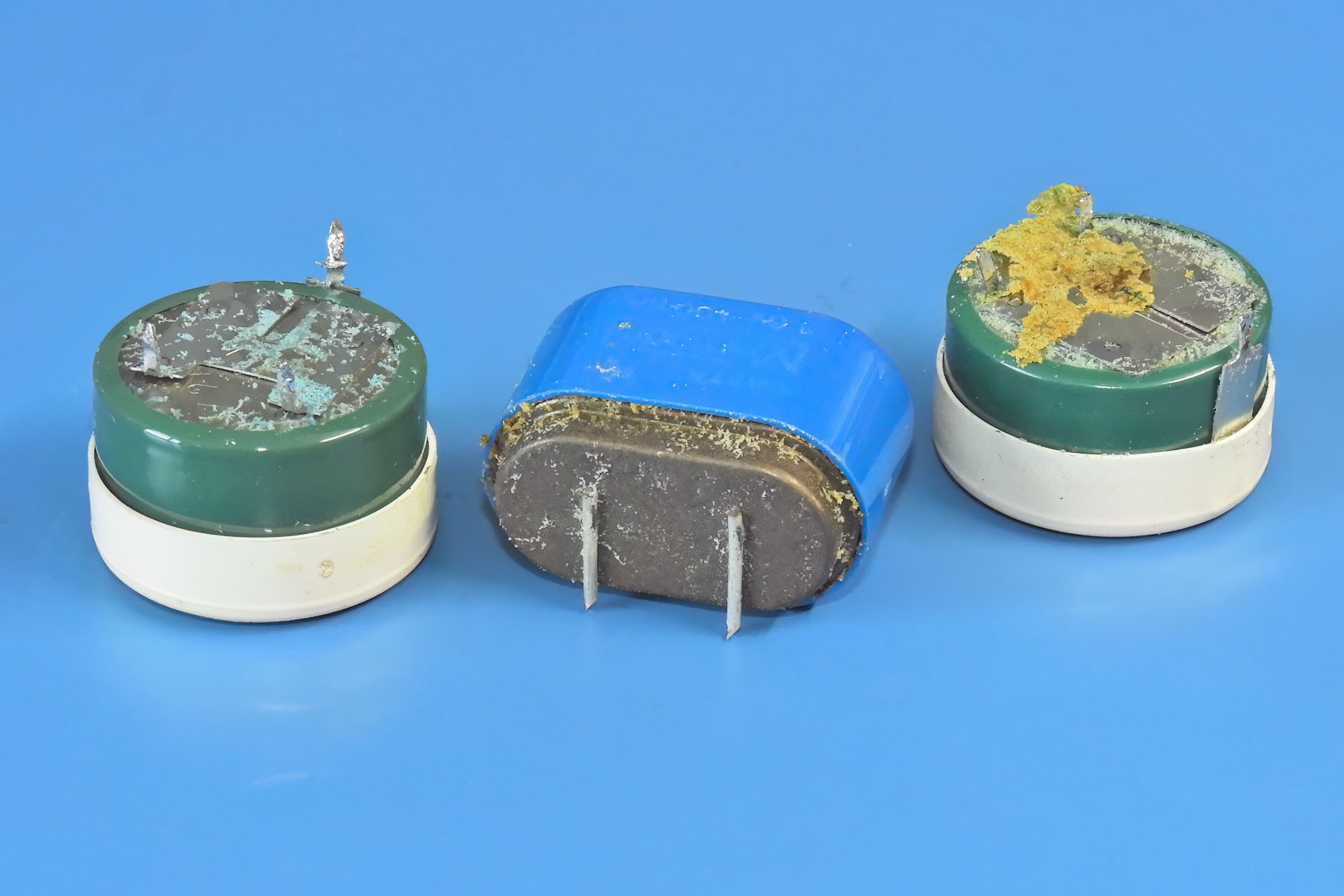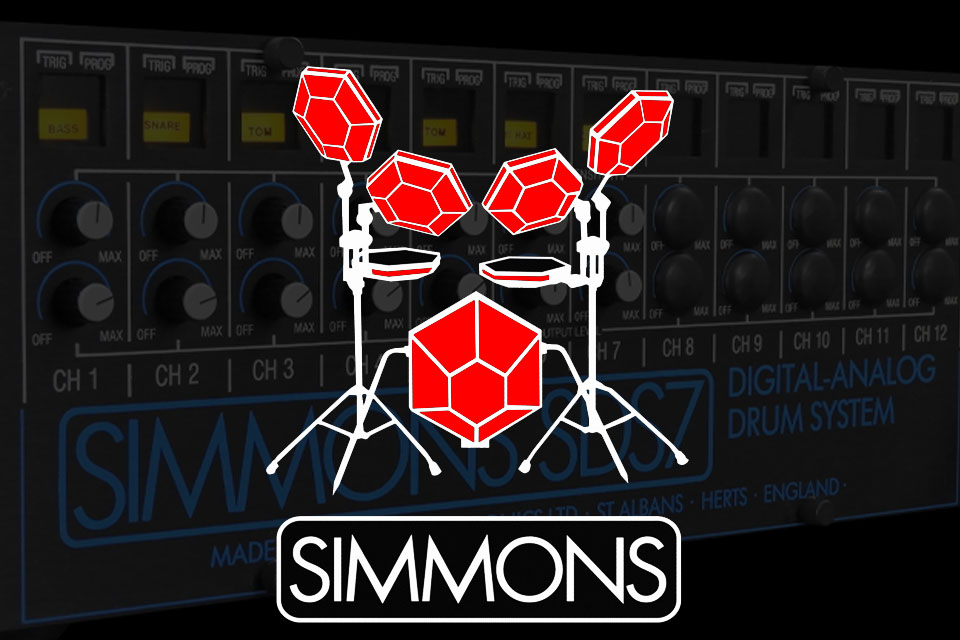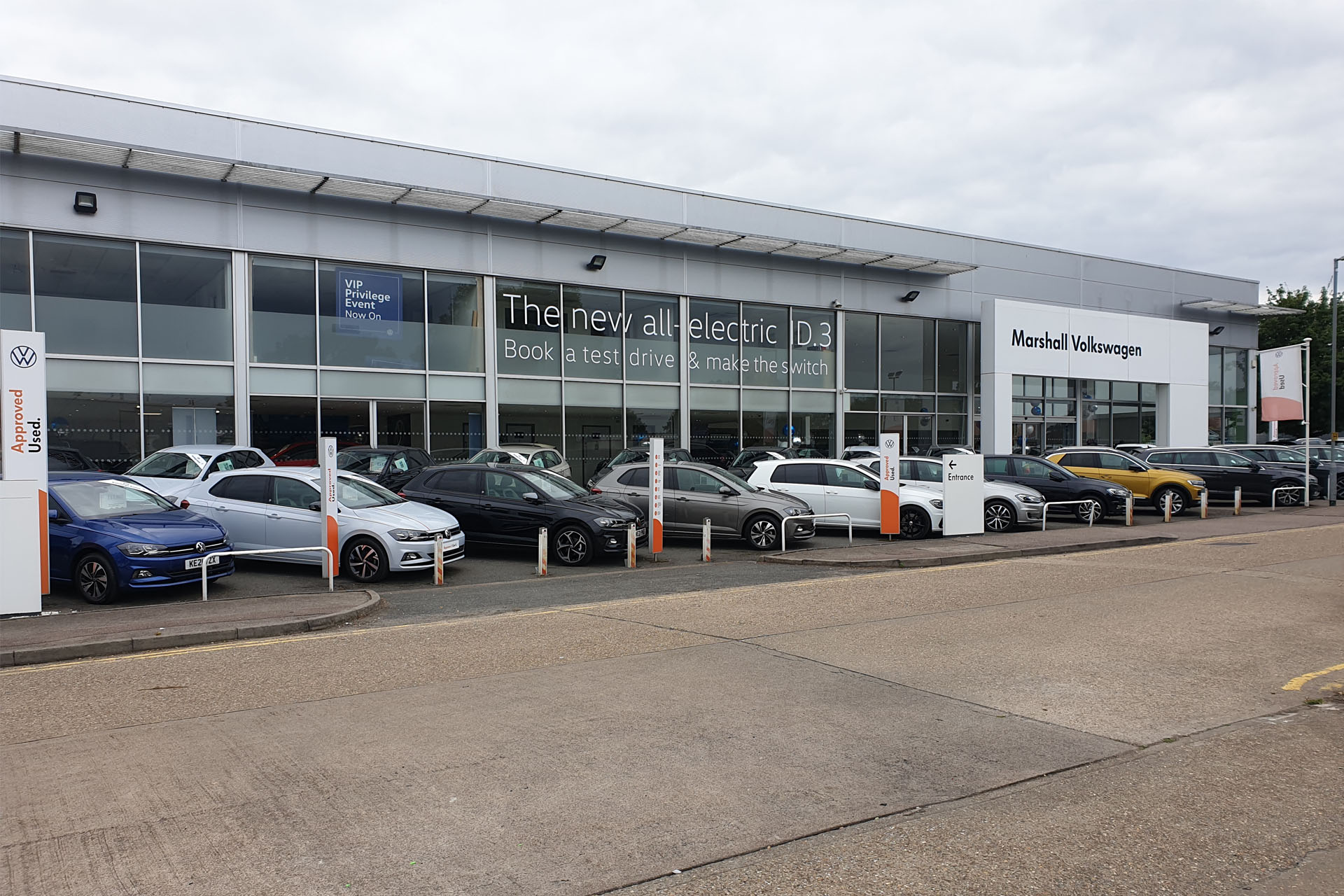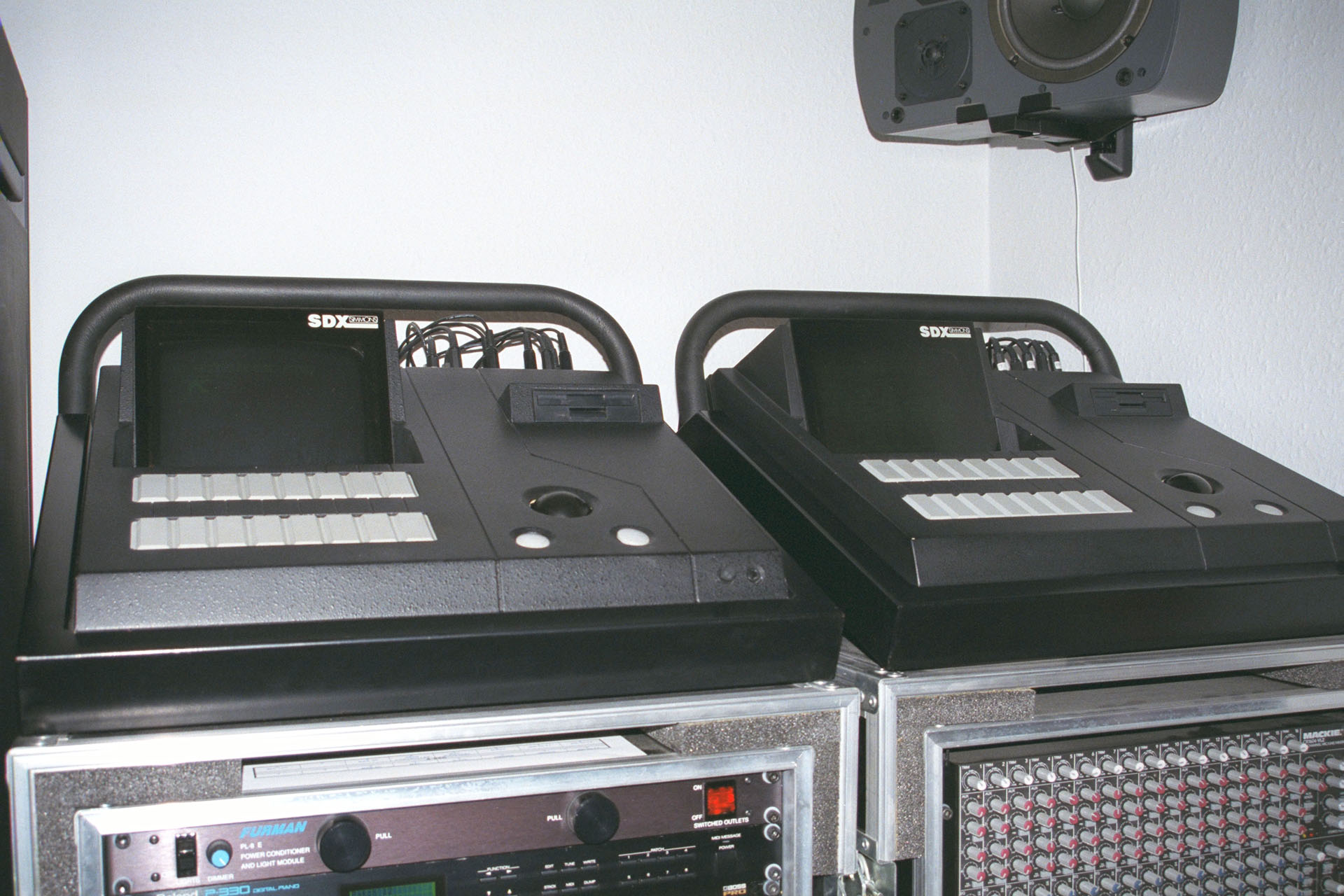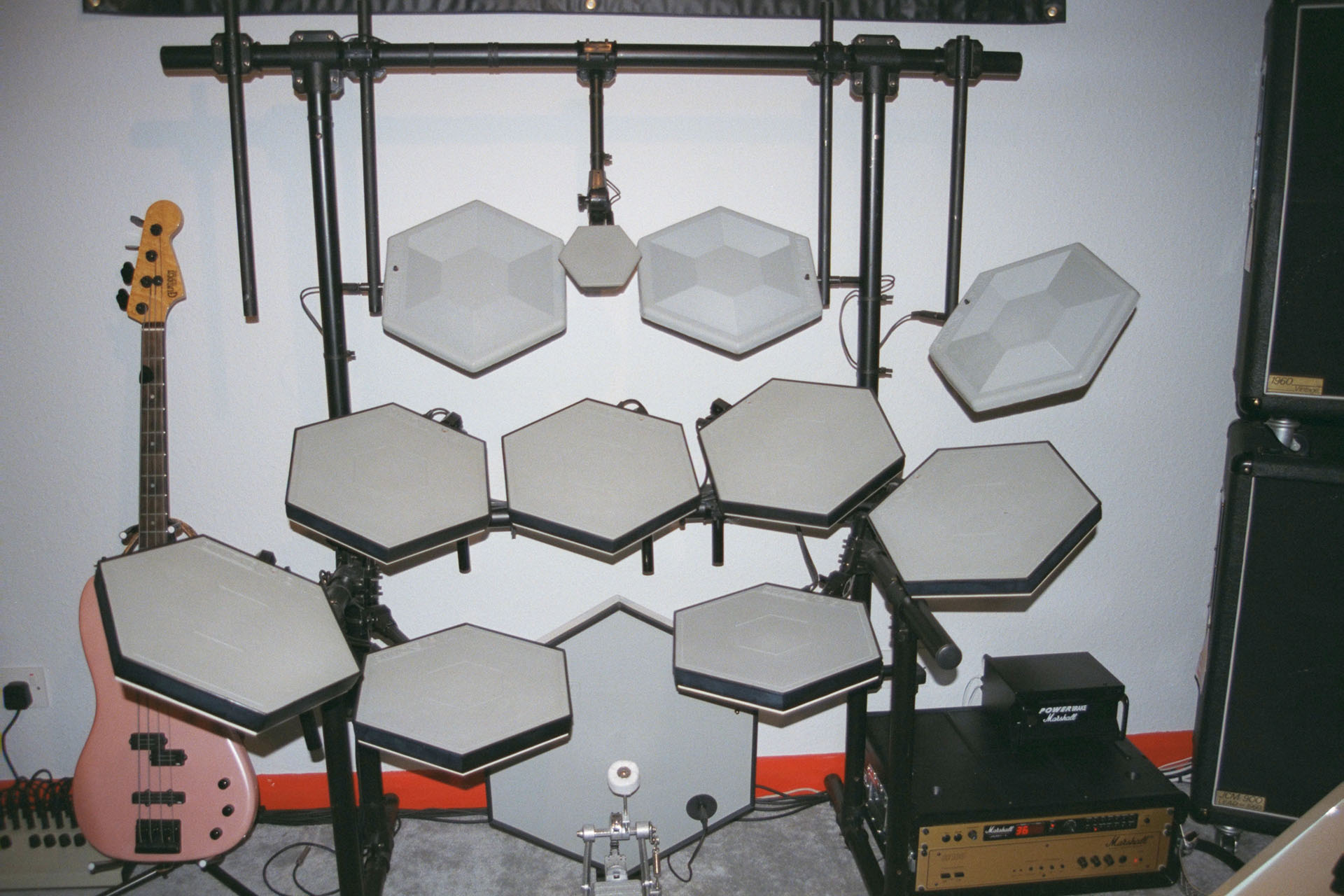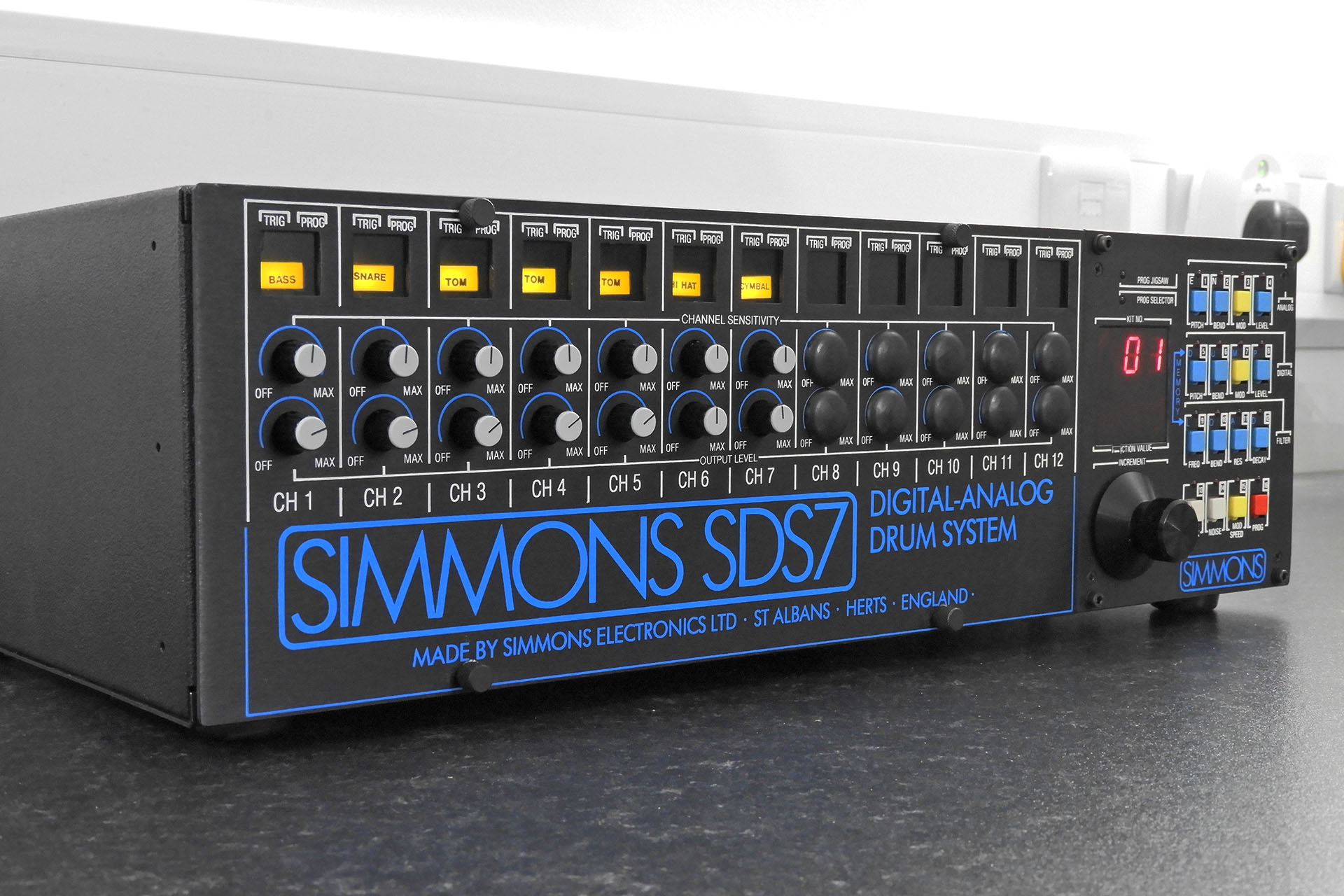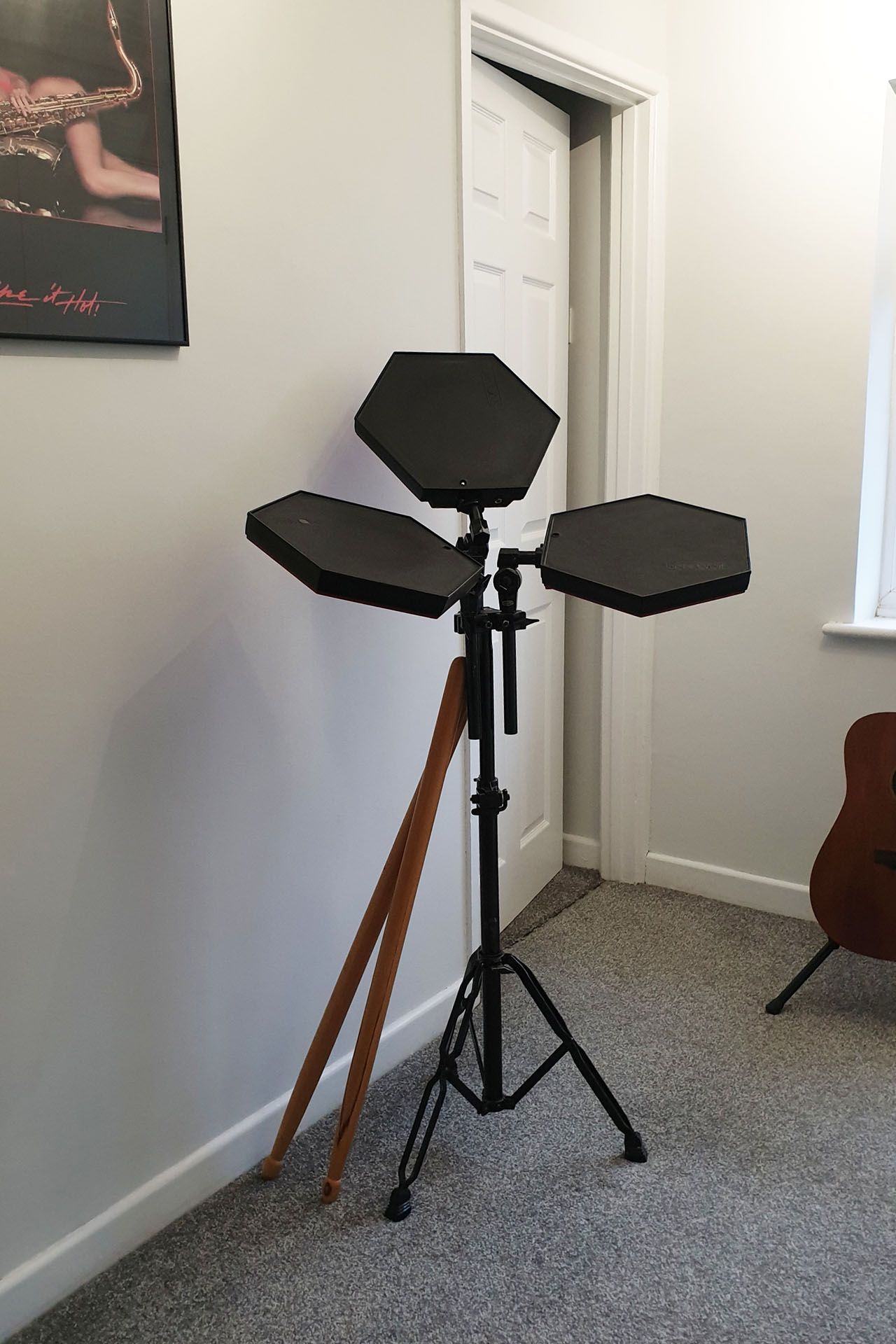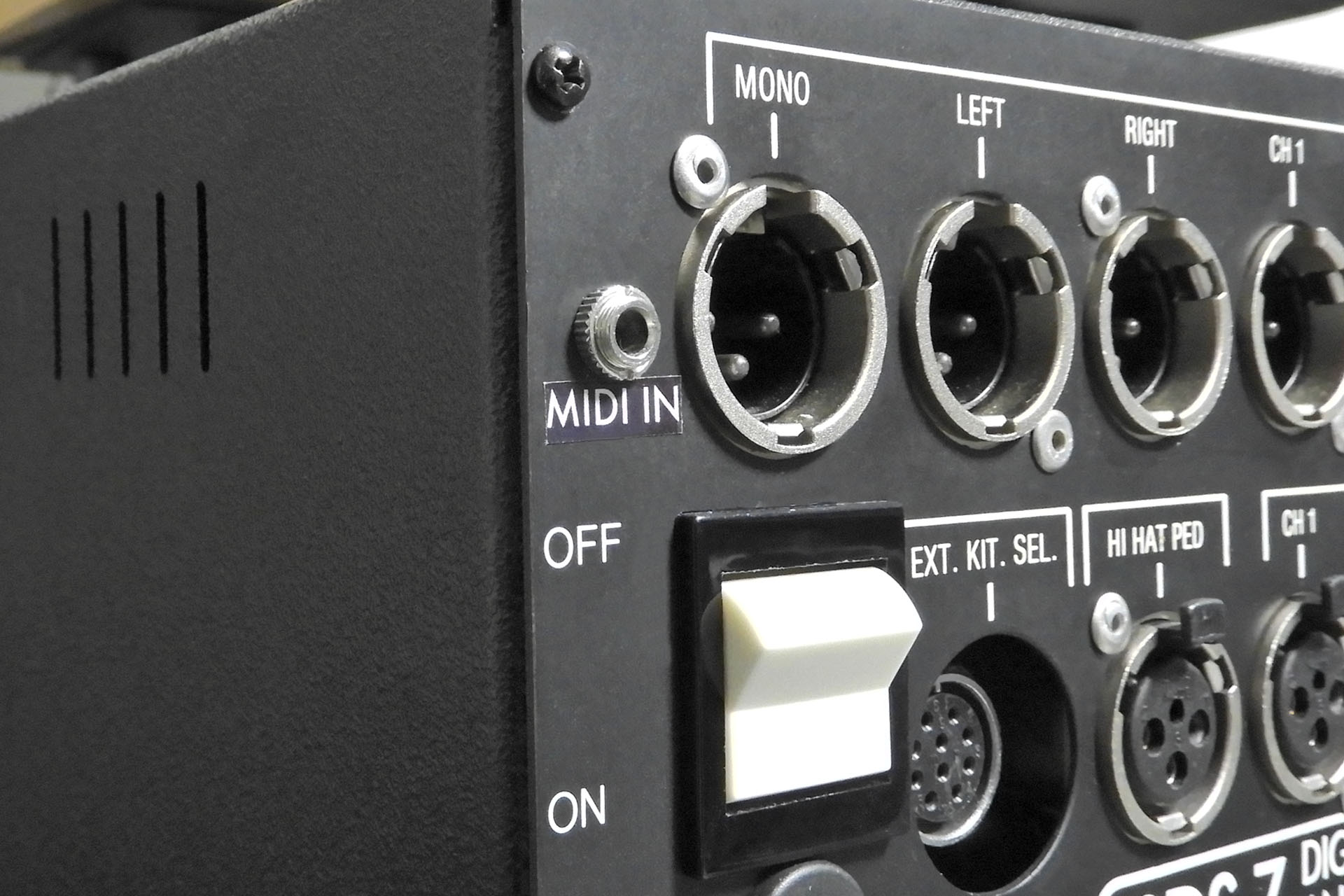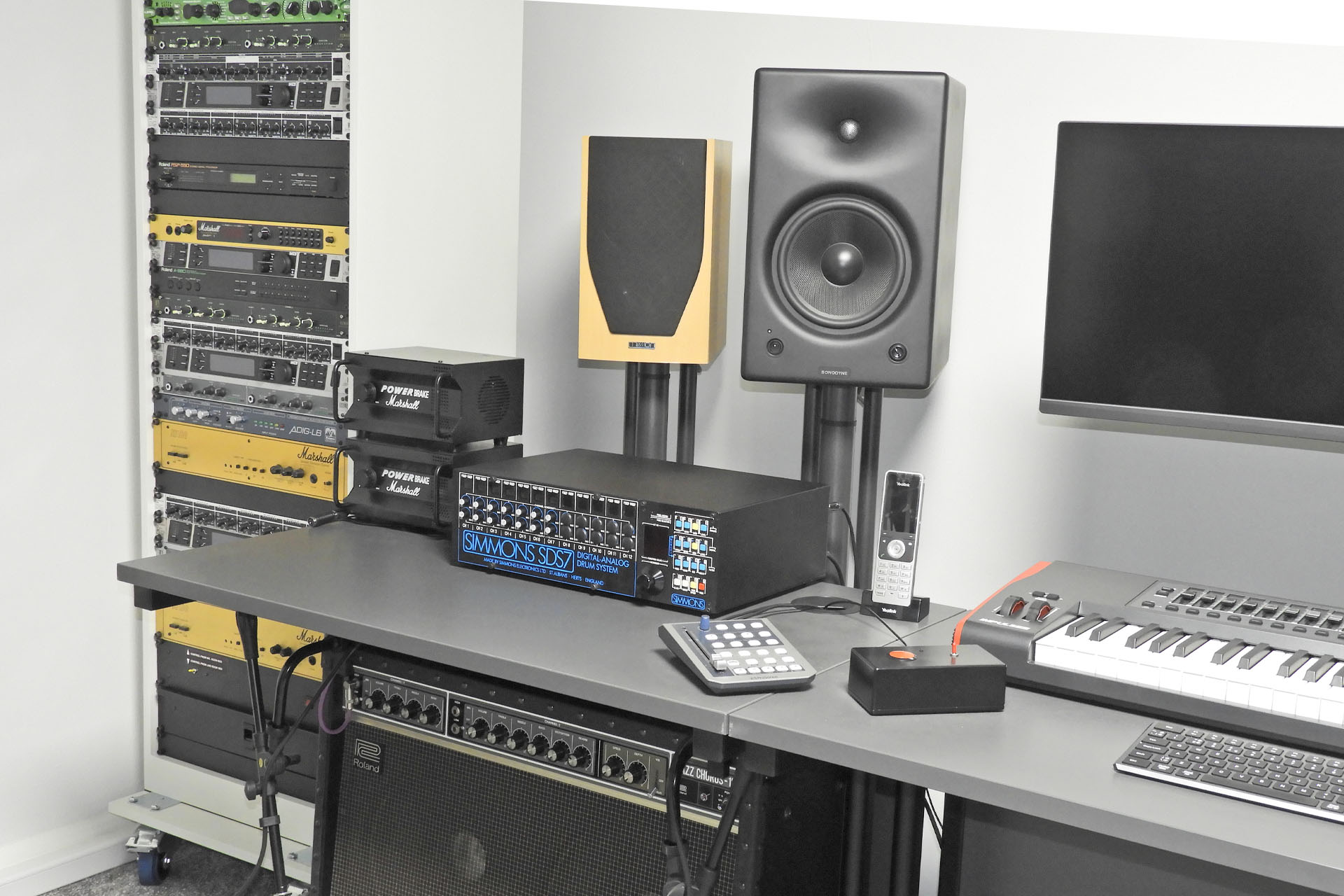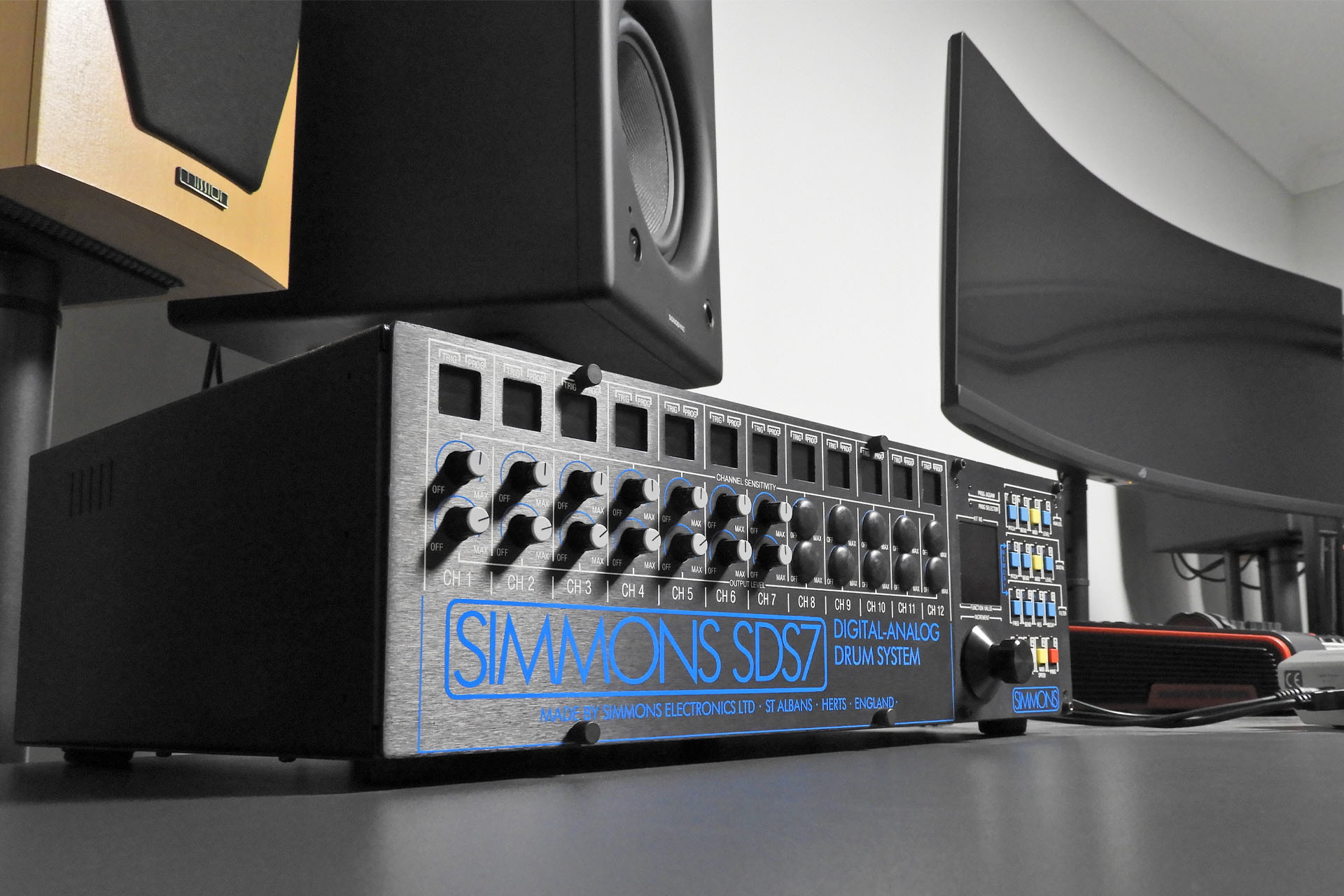Over forty years and a couple of clones later, I'm delighted to announce the all new AMEP Advanced Memory Expansion Pack for the Simmons SDS7.
It can take days, weeks or even months to program a bunch of patches into your Simmons SDS7. After all your hard work, there's only ever been one way to back it all up and that's with a memory cassette via the expansion port. Well, not anymore! 🙂
The original Simmons memory cassette is exceedingly rare, more so than the SDS7 itself and finding one that hasn't been eaten by the batteries is virtually impossible. Unfortunately, the same can be said for the clones that have appeared over the years.
Also using 6116 SRAM chips, the original MEP was very large and just like the memory-board in the SDS7, it had built-in NiCad batteries that required the memory cassette to be regularly plugged into a powered up SDS7, so that the batteries could be recharged.

Being a large device, connecting it to the SDS7 via the rear DIN 41612 socket that wasn't really designed to take that kind of thing, caused its own problems. A lot of people kept a box of matches with their memory cassette. Perhaps you can work out why.
Over the years, clones have been developed but strangely, they're all copies of the original Simmons memory cassette. Hence the term 'clone', I guess. Despite huge changes in technology since 1983 however, this means that all the issues associated with the original Simmons memory cassette, have also been copied.
This year, while developing a couple of peripherals for the Simmons SDS7 which were intended to enhance performance and reliability and hopefully extend life span, I realised a need for a 'better' external data storage solution, especially since two of the peripherals I've developed, involve disconnecting the SDS7's memory back-up battery. Of course doing so, will mean losing all the data.
A good starting point for something like this was to define objectives so here's a sneak peak at the design brief I gave myself:
- Small and compact design
- More memory than the original MEP
- Retain the 'Data' Protect' function
- Remove dependency associated with rechargeable batteries
- Battery should last for ten years minimum
- Include a mechanism so that when the battery is changed, data is retained for a minimum of ten minutes
- The new device must be affordable.
So all that was great but how was I going to achieve it?
The first thing was to get a concept together and then take a look at the Simmons SDS7 to see if something radical could actually work.
Well, I couldn't do all that by myself, not in any realistic timeframe, anyway. Fortunately, I've got a friend. In fact, I think I can safely say, that Guy Wilkinson is my best friend! 🙂
Guy and I got to know each other back in 2020, through the work he's done on the Roland Super-JX and my first product Aurora, a modular switched-mode power supply for the Roland MKS-80.
In June 2024, Guy and I took a day out and went to the 'Synthesised' exhibition at the National Computer Centre in Cambridge. We arrived early so went for a coffee and it was then that I mentioned my idea of AMEP Advanced Memory Expansion pack for the Simmons SDS7. Guy was surprisingly excited and quite keen to help.

As has already been pointed out, the original Simmons memory cassette was very large, exerting undue torque on the SDS7's DIN 41612 expansion port. Hence, the box of matches which people would put underneath the cassette! So, not wanting to copy (clone) the original device and using newer, more compact technology instead, my idea was to make AMEP such that the body would sit perpendicularly to deck and parallel to the back panel of the SDS7. Instead of sticking out from the SDS7, it would run up the back of the SDS7. To keep costs down, Guy and I also explored the potential for a 'caseless' design.
To achieve this, AMEP began as a sandwiched, 2-board idea which both Guy and I were really happy with and which allowed us some versatility with regards layout.
Oh and there's one more thing...
When hooked up to the SDS7, the original memory cassette obstructed access to the SDS7's sequencer input 1 jack socket. SERIOUSLY?!?!? It should be straight-forward enough to design AMEP so it doesn't do the same!

Within a very short period, Guy had knocked up the concept and contacted me to come over and rip apart my test SDS7. I was developing my Dark Matter modular switched-mode power supply for the SDS7 at the time, as well as Pleiades, my lithium battery converter and Tubbutec uniPulse adapter, so I was a bit apprehensive. On the other hand, this had to be done and I really wanted all three products to go out at roughly the same time.
I had some other plans for the new storage device and so we checked out a lot stuff on the SDS7 than we actually needed to. Unfortunately, the 'keep these free for future expansion' lines as referenced on the original SDS7 schematics, didn't go anywhere and my idea of including MIDI for example, went straight out of the window. 🙁
8th September 2024 and we had our first prototype. Guy came over and plugged it in. I performed a bank dump. I removed AMEP, switched off my test SDS7, pulled the battery and then we tried to reload from the AMEP. Well, we were delighted. AMEP seemed to work. We tried this several times, checking the memory protect function and writing / reading from all four banks on the AMEP.

Yes, AMEP prototype 01 looked a bit 'Heath Robinson' but Guy and I didn't know for sure if SDS7 would even talk with our new gadget so knocking up something to see if SDS7 would recognise a friend, was a necessary first step. Anyway, the test results were very encouraging. In fact, we were positively thrilled and so we continued.
The next couple of weeks were busy. Guy poured a considerable number of hours into finalising a pre-production prototype while I focused on further testing, graphics, enclosure and packaging.
You'll notice the very small LR44 type battery on Prototype 01 in the image above. Well, one criteria missing off the original list was that AMEP should use a standard and readily available battery and so the design had to be changed to accommodate a much larger CR2032. An appropriate battery holder has to make battery changing easy but should also be as discrete as possible.
I continued to test AMEP on my studio SDS7, my test SDS7 and a customer unit (thanks, Peter). Initially, AMEP didn't work on the customer's machine and I quickly discovered a problem with the 40-way IDC ribbon cable between the PSU board and the back plane. You need to remember that these cables are forty years old! One new IDC cable later and everything was fine. Hey, I'm not even sure if Simmons tested the SDS7 expansion port during the production process.

One problem that Guy and I have is that we use different electronic design software. This makes exchanging files very difficult and with something as involved as a new data storage device for a forty year old synthesiser, we had to come up with workarounds, which was a headache in itself.
By 24th September 2024, we were ready to submit an order for the first batch of PCBs.

Friday 4th October 2024, Guy came over and we made three AMEPs. It was an exciting and fun-packed afternoon. We even had Duran Duran playing in the background. Hey, all three AMEPs worked perfectly! 😮

WRITE VERIFICATION
There's no mention in the Simmons SDS7 manual about any routine to verify that data has correctly been written to an external data storage device. Guy and I discovered however, that if AMEP's memory protection switch is ON and one attempts to write data to an AMEP memory location that already has that data, then the SDS7 display will flash up 'AC' meaning that everything's fine. We couldn't see any reason why SDS7 would respond differently, with an original Simmons memory cassette as this feature doesn't have anything to do with AMEP. We're definitely not claiming any credit for that one but it's a cool hidden feature.

I couldn't wait to tell my Simmons Vintage Technical Network colleagues the good news. With confidence high, Michael Buckner asked a question which was going to come sooner or later; "Would AMEP Advanced Memory Expansion pack for the Simmons SDS7 also work on the SDS6?"
Well, I couldn't see why it wouldn't but having confirmation would be a big deal so I decided to send Michael Buchner and Ed Rose, AMEP samples and await their response.
At last! Decades after its release, there's now a cost-effective and reliable way to save your valuable SDS7 and indeed, your SDS6 data to an external device.
AMEP is handmade in Hemel Hempstead, Hertfordshire, United Kingdom, only a few miles from St. Albans where Simmons used to be based and where I used to work.
And finally...
I really wanted to do AMEP justice so AMEP is supplied in it's own bespoke tin which has a transparent lid section.
I designed an insert, originally to be made from ESD foam but the quotes I received for this small item were insanely prohibitive. In fact, I figured that I could buy a 3D printer and make something better, myself.
Well, my graphics guy Tony and I have been meaning to get into 3D printing for a long time and we thought this would be a good excuse to make a start. Hence, the insert is 3D printed by me.
Plagued by whole load of things that gave the Simmons SDS7 the unfortunate reputation of being quite unreliable, albeit that virtually all the issues can now be resolved, I wanted SDS7 lovers to have something that they could depend on for a change. That's one reason why the AMEP packaging took a bit longer to sort out than I'd have liked. While AMEP is pretty robust and not particularly vulnerable to electrostatic discharge (ESD) damage, the same can't be said for your SDS7.
Unlike machines that came later, the data lines on the expansion port on the back of the SDS7, are completely exposed and unprotected. THIS IS A BIG DEAL. Whether you have AMEP or not, please do take appropriate precautions when handling your SDS7.
Anyway, I digress slightly. AMEP packaging is made with a conductive PLA, thus reducing the risk of ESD damage, not to AMEP but to your SDS7. 🙂

Tony observed that everything about AMEP except the tin, is made by Plasma Music Limited! How cool is that?
If you're keen to keep all your Simmons SDS7 data safe, you can buy AMEP here:
 And finally, AMEP advanced memory expansion pack for the Simmons SDS7 would have taken much longer to develop and perhaps might not have happened at all, if it wasn't for the help, support and encouragement I received from my Simmons Vintage Technical Network friends and colleagues. THANK YOU Ed Rose, aka The Simmons Guy, Michael Buchner and Patrice Jacquot.
And finally, AMEP advanced memory expansion pack for the Simmons SDS7 would have taken much longer to develop and perhaps might not have happened at all, if it wasn't for the help, support and encouragement I received from my Simmons Vintage Technical Network friends and colleagues. THANK YOU Ed Rose, aka The Simmons Guy, Michael Buchner and Patrice Jacquot.
In particular, special thanks go to my dear friend Guy Wilkinson of Super Synth Projects who poured in hours and hours of work into this one. Guy, THANK YOU for doing so much to get AMEP finished and working. What you did is just brilliant! 🙂
UPDATE - 16th October 2024
Wow! I've already received the big question pertaining to the weird SDS7 Bank Anomaly. Whilst this hasn't got anything to do with AMEP, it's an important question and so I thought I would add my answer to this post.
According to the original owner’s manual, the SDS7 has two banks: HI and LO. The HI bank includes patches 40 to 79 and the LO bank includes patches 01 to 39.
Well, it doesn’t take a rocket scientist to notice that the HI bank has forty patches and the LO bank has thirty-nine patches! 🤔
THE SDS7 BANKS ARE NOT THE SAME SIZE 😡
So how the hell does this work? A good question and I don’t have a working original Simmons memory cassette to test that.
In theory, backing up the HI bank and then writing it to the LO bank will mean that you’ll lose a patch. Going the other way, backing up the LO bank and writing it to the HI bank will mean that you’ll have one patch unaffected (patch 40).
So here’s how it works:
- Backing up the HI bank (patches 40 – 79) and writing to LO will result in patch 40 being lost. Patch 41 is written to patch 01 instead and patch 79 is written to patch 39.
- Backing up the LO bank (patches 01 – 39) and writing to HI will result in patch 40 not being written to. Patch 01 is written to patch 41 instead and patch 39 is written to patch 79.
Yeah, I know. WTH?!?!?!?
Whilst AMEP is an incredibly cool piece of kit, it’s not ‘intelligent’. AMEP doesn’t have an on-board processor to negotiate the SDS7 bank anomaly. If it did, AMEP would have been prohibitively expensive and physically, much larger. ☹
BUT…. There’s a workaround:
!!! DON’T USE PATCH 40 !!!
Of course, if you save the LO bank and write it to the LO bank and if you save the HI bank and write it to the HI bank, everything will be fine. If however, you want to swap banks, then you'll have to use the workaround. I'd imagine it's the same if you have an original Simmons memory cassette.
UPDATE - 1st November 2024 - AMEP IS NOW ARM'D
Manufacturing tolerances have changed considerably over the past forty years and while AMEP will click in nicely into a brand new female DIN 41612 connector, that's not always the case with the same connector on the back of the SDS7. After four decades, things can feel a little loose.
To cater for a loose fit, AMEP now has an Anti Rock Mechanism (ARM) which securely keeps it in place. Not rocket science, just some PCB spacers added to AMEP's connector end but which work just great.

Unlike the original Simmons memory cassette, AMEP is small and light but the new ARM makes things feel even more solid and will hopefully reduce wear of the SDS7 expansion slot, over coming decades.

The new anti rock mechanism allows AMEP to 'snap' into place. Yes, a simple idea but very worth implementing.
UPDATE - 26th January 2025
Compiling installation manuals and in the case of AMEP, a user guide can often take longer than the technical development of the respective product. Wanting my stuff to be available to the wider vintage music gear community, ideally, I'd like all of my manuals translated into several languages. Realistically that's not going to happen but when someone volunteers to translate at least one manual into one language, I simply have to jump at the chance.
That's exactly what happened while I was having a casual on-line conversation with my Simmons Vintage Technical Network buddy, Michael Buchner, who just asked "Would you like a German version of the user guide?".

One of the guys who kept me motivated during my recent flurry of Simmons related projects, Michael did a great job and delivered a Bedienungsanleitung, within only a few days of our conversation.
Michael, THANK YOU so much for this! 😎
The AMEP user guide is made available after purchase but there's also a QR code on the packaging which will take you to a combined English / German file.




























